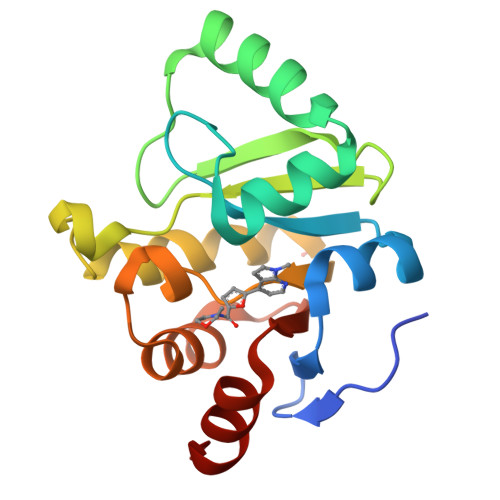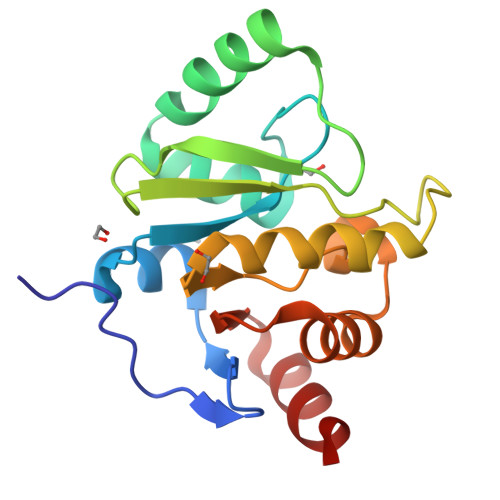Discovery and Development Strategies for SARS-CoV-2 NSP3 Macrodomain Inhibitors.
Schuller, M., Zarganes-Tzitzikas, T., Bennett, J., De Cesco, S., Fearon, D., von Delft, F., Fedorov, O., Brennan, P.E., Ahel, I.(2023) Pathogens 12
- PubMed: 36839595
- DOI: https://doi.org/10.3390/pathogens12020324
- Primary Citation of Related Structures:
8C19, 8C1A - PubMed Abstract:
The worldwide public health and socioeconomic consequences caused by the COVID-19 pandemic highlight the importance of increasing preparedness for viral disease outbreaks by providing rapid disease prevention and treatment strategies. The NSP3 macrodomain of coronaviruses including SARS-CoV-2 is among the viral protein repertoire that was identified as a potential target for the development of antiviral agents, due to its critical role in viral replication and consequent pathogenicity in the host. By combining virtual and biophysical screening efforts, we discovered several experimental small molecules and FDA-approved drugs as inhibitors of the NSP3 macrodomain. Analogue characterisation of the hit matter and crystallographic studies confirming binding modes, including that of the antibiotic compound aztreonam, to the active site of the macrodomain provide valuable structure-activity relationship information that support current approaches and open up new avenues for NSP3 macrodomain inhibitor development.
Organizational Affiliation:
Sir William Dunn School of Pathology, University of Oxford, Oxford OX1 3RE, UK.



















